Why Critical Race Theory Should be Taught in Schools: Ad Agency Edition


Critical race theory is a scholarly discipline formerly confined to the halls of law schools. Now suddenly, white supremacists and their allies have ginned up fears over its application to grade school children. As a group, the opponents are unable to explain how they made the leap from the rarified air of law school lecture halls to K-12 classrooms, but one thing is sure: Business leaders should take the time to understand what critical race theory really is, and ad agencies provide one good example of why.
Critical race theory becomes the latest target in the culture wars
Legal scholars coined the term “critical race theory” (CRT) in the late 1970s. It is not a single subject, or even a group of programs. It is a discipline. It refers to the study of laws and other government-sanctioned systems that may not appear race-based in abstract. However, in combination with other elements, these systems can cement and perpetuate the race-based suppression that cascades throughout American history from its earliest beginnings on up to the present day.
For political purposes, Republican office holders and their allies are deploying critical race theory as the new “red scare,” portraying it as a form of racial indoctrination meant to shame and blame white people. Former President Trump himself sparked the movement while campaigning for a second term last fall, when his administration threw critical race theory into a list of forbidden diversity training topics.
However, that is clearly a false representation.
“CRT is not a diversity and inclusion ‘training’ but a practice of interrogating the role of race and racism in society that emerged in the legal academy and spread to other fields of scholarship,” the American Bar Association explains, adding that “It cannot be confined to a static and narrow definition but is considered to be an evolving and malleable practice.”
Editor's note: Be sure to subscribe to our Brands Taking Stands newsletter, which comes out every Wednesday.
In the academic context, critical race theory provides a platform for scholars to critique the outcomes of legal systems and other social constructs objectively, without becoming entangled in the subjective weeds of whether or not individual policy makers are racists.
As a complement to diversity training programs in the corporate world, the discipline of critical race theory could help business leaders analyze their hiring practices objectively and lower the temperature of conversations about race and exclusion. That would be especially helpful in breakout sessions, where close quarters can easily enable emotions to run high.
Ad agencies drop the ball on Three’s a Crowd diversity pledges
Ad agencies provide an especially good example of the need for an understanding of critical race theory in business, partly because the field is notoriously behind the curve on diversity hiring. The exercise in disciplined discussion could help business leaders analyze generations of exclusionary practices from a solutions-based perspective.
Ad agencies also reveal that the work of diversity hiring needs to begin far ahead of the first job interview.
The advocacy organization Three’s a Crowd (TAC) made an important step in that direction back in 2018, when it embarked on a mission to help Black creative professionals embrace Blackness in advertising and other fields including marketing, production, fine arts and entrepreneurship:
“We rise on the shoulders of a rich history of Black thinkers and leaders who advocated self-reliance and black agency. From the Harlem Renaissance to BET, from Sojourner Truth to Spike Lee, and from Marcus Garvey to Dr. Dre, we follow the example of those who never asked for a seat at the table, all the better to build their own.”
As part of that endeavor, last summer Three’s A Crowd asked ad agencies to commit to hiring more Black leaders. The organization marked 13 percent by 2023 as the hiring goal, to match the percentage of the Black population in America. As of last summer, Blacks only accounted for 8 percent of employees at ad agencies, and Three’s a Crowd estimated that Blacks hold only 2 percent of leadership positions in ad agencies.
The campaign launched in the midst of the reenergized Black Lives Matter movement, and the response was encouraging. Three’s a Crowd received 172 pledges from 71 ad agencies for its “In for 13” campaign.
The campaign involved far more activity than simply signing a pledge. Three’s a Crowd developed a full program in consultation with diversity experts. It was designed to complement additional work that would need to be undertaken by those signing the pledge.
Unfortunately, it appears that “additional work” was far too big of an ask for some firms.
Last week, AdWeek reporter Larissa Faw noted that 49 agencies have dropped their diversity commitment to Three’s a Crowd. Currently, the roster of those remaining includes just 20 agencies, two production houses and two holding companies.
Talking is not the same as walking
So, what went wrong?
In part, the problem is a familiar one that cuts across all sorts of businesses: the pledge signers promised more than they delivered.
Over-promising on corporate pledges is not unusual in any business sector, but it can be especially acute in the ad agency field, where the practice of self-examination, accountability and transparency has not yet taken hold.
“TAC from the beginning made it clear that joining the pledge would include markers of accountability and transparency that the industry doesn’t usually demand,” Faw explained.
In addition, many of those signing the Three’s a Crowd Pledge were mid-level executives. When it came time to implement the program, upper management balked.
Three’s A Crowd core member Tahirah Edwards-Byfield noted that “promising to increase Black leadership by 2023 is one thing. Committing to doing it — and the structure changes it will take for many companies to do so effectively — is another thing entirely.”
“Creating action around anti-racist practices felt like a lot of work that many agencies either weren’t equipped for or interested in,” Three’s a Crowd co-founder Reonna Johnson added.
On a more optimistic note, Faw observes that some of those dropping out have incorporated some elements of the program. She also indicates that Three’s a Crowd accomplished the important work of exposing a key missing link in diversity hiring: namely, the need for an overhaul of internal corporate culture, not simply the application of new training programs.
Why critical race theory should be taught in schools
The notion of overhauling corporate culture from the inside out can easily be fraught with emotion. In that regard, the discipline of critical race theory can help business leaders promote constructive self-examination without falling into the blame-and-shame trap.
The especially compelling need of an overhaul in the ad industry was laid out last year in an op-ed published by NBC News. It was written by Christopher Boulton, associate professor of communication at the University of Tampa, who has studied diversity hiring in the ad industry.
“Advertising’s unique ability to persuade by creating the appearance of change through rhetoric, symbols and events has helped corporations and existing power structures conceal and protect white gains and Black losses behind the scenes for generations,” Boulton wrote, launching into a fiery critique of generations-old exclusionary hiring practices.
“When it comes to feigning change while continuing to marginalize Black lives and maintain white power, advertising has a long record as a repeat offender. And nothing demonstrates that more clearly than the ongoing, striking lack of diversity in the advertising industry itself,” he added.
According to Boulton, the root of the problem is an over-reliance on must-hire lists that foster nepotism and friend referrals, amplified and supported by a lack of objective hiring standards. As the Three’s a Crowd experience demonstrates, the practice is supported by a lack of transparency and clear hiring standards.
Nepotism and friend referrals are not uncommon in any entity that hires, whether they are in business, government or nonprofit. However, Boulton excoriates the ad industry in particular for fostering an environment that pushes Black employees out of the mentoring network and leaves them vulnerable to “white backlash.”
Specifically, Boulton interviewed interns and found that “over half of the white ‘must-hires’ in my study opposed affirmative action, even though they got their own spots through just such a program; these white hires nevertheless complained that Black interns got in ‘only because’ of their race.”
That attitude can permeate corporate culture and lead to significant brand reputation damage, as coincidentally illustrated by ESPN earlier this week.
Clearly, it would help ad agencies and other businesses if interns and employees were aware that their must-hire status is nothing more or less than a generations-old form of affirmative action. Getting a good job through family, friends or school connections is nothing to be ashamed of. It happens all the time. The real shame lies in denying the structures that create that opportunity and denying the structures that keep others out of the loop.
Business leaders who are serious about diversity hiring could make some real progress by exposing employees to the discipline of critical race theory in workshops and professional development programs. They could also help cut off racism at the source by advocating for critical race theory as a standard practice in college-level courses and business schools.
For that matter, educators are beginning to fight back against new laws prohibiting the use of critical race theory in public schools. Last month the National Education Association passed a resolution calling for “racial honesty in education including but not limited to critical race theory.”
Considering that an organized effort is well under way to pass laws seeking to restrict critical race theory, the NEA has its work cut out for it. Support from corporate leaders would go a long way towards ensuring that the next generation of interns is well-informed and well-equipped to foster economic growth and opportunity in a more dynamic, diverse, and equitable society.
Image credit: Bruce Mars/Unsplash
Here's One Company Kicking the Tires on a Four-Day Work Week


As reports keep surfacing about more and more employees suffering from burnout, responses from business leaders, if any, are all over the map.
Meanwhile, a four-year trial of the four-day work week in Iceland led to 86 percent of that country’s working population to qualify for a shorter work week, from 40 hours to 35 hours per week, and for the same rate of pay. The results have included workers reporting that they felt less stress; spending more time with their families; and either enjoying more time pursing their personal interests or finishing those pesky tasks such as household chores.
Some may question whether a relatively isolated country home to only 360,000 people can offer lessons to larger countries, massive multinational corporations or even startups.
Nevertheless, it appears more business leaders realize they have a burnout problem on their hands and preaching the virtues of “self-care” or “well-being” are not going to cut it. For example, the CEO of the software company Okta reportedly emailed all 3,500 of the company’s employees, urging them to take time off and even asked them to share their vacation plans with him. The company allows for unlimited vacation time, a policy advocates say could help motivate employees to both work hard and stay loyal to their companies.
Editor's note: Be sure to subscribe to our Brands Taking Stands newsletter, which comes out every Wednesday.
Furthermore, it is no secret that the work culture in the U.S. is one that leads to many employees feeling “guilty” if they dare take some time away from the office. To that end, more companies are taking a different twist on Okta’s approach, as in offering cash to encourage their employees to get away.
But as anyone who has tried to rent a car or had to fly on a plane this summer can verify, those promises to take time off can hit a brick wall. Until the airlines can iron out all those logistical problems that are making summer plans more nightmare than nirvana (never mind the anti-masker incidents), hitting the road or airspace isn’t necessarily the most palatable option for many workers. The rental car shortage, volatile labor market and summer heat across the U.S. are among the factors leading many citizens to kick the vacation can down the road for a while.
Enter the four-day work week.
One company testing out the four-day work week is Kickstarter, the popular crowdsourcing platform. The New York-based company says it will test out the schedule next year. Employees will receive the same salary, only work fewer hours. According to a recent report, as the logic goes, being in the virtual or physical office will lend to fewer interruptions at work while employees can stay more focused while they are on the clock.
According to the nonprofit 4 Day Week Global, businesses that shift to a four-day work week could score many benefits: happier and less stressed employees; an advantage in finding and retaining talent; and an acknowledgment of 85 percent of working adults who have said, in at least one survey, they favor a four-day work week.
Let’s face it: technology such as instant messaging, email, human resources software and even decades-old developments such as word processing and spreadsheets does not necessarily mean our jobs are easier. The reality today is that people are expected to do even more. And one disruptive global pandemic later, workers have made it clear that they can be trusted, and that they are both efficient, creative and can adapt to just about any situation. It’s about time business leaders respond in kind.
Image credit: Elisa Ventur/Unsplash
The Many Benefits of an All-Electric Fire Truck


If there are any lingering doubts left regarding the reliability of electric vehicles (EVs), a new electric fire truck from the firm Rosenbauer should lay them to rest once and for all. After all, breakdowns and other mishaps can have life-or-death consequences in emergency services. The new fire truck is designed to demonstrate that electrification meets, and beats, diesel engines on performance and on other measures, too.
Volvo and Rosenbauer team up for a revolutionary electric fire truck
Rosenbauer selected Volvo Penta to provide the drivelines for its new electric fire truck, dubbed Revolutionary Technology.
Three of trucks were delivered last year to fire departments in Berlin, Amsterdam and Dubai for on-the-road customer testing, and Rosenbauer has modified the design to introduce a version in North America, too. Last week Volvo announced that it has also begun production-scale manufacturing of the truck’s electric drive system (as shown below).

Rather than simply replacing a diesel engine with a battery on a conventional fire truck, Volvo and Rosenbauer collaborated on a new electric fire truck design that takes full advantage of the flexibility and space-saving features of all-electric technology.
“By walking away from conventional commercial vehicle concepts and developing an electric solution for the truck’s driveline, Volvo Penta and its customer Rosenbauer have introduced a completely new vehicle architecture which is set to transform the fire service industry,” Volvo explained last year. “With its electric driveline, the fire truck boasts excellent ergonomics, functionality, and safety, as well as high loading volumes, compact dimensions and one-of-a-kind agility.”
To be clear, Volvo and Penta are not taking any chances. The new fire truck is equipped with a backup diesel engine in case of long deployment. However, Volvo anticipates that the battery system will provide ample power for all but the most extreme use cases.
The many benefits of an electric fire truck and other trucks, too
The elimination of vehicle emissions is especially important in the emergency services field, where fire trucks and other vehicles often remain parked in idle mode for long stretches of time.
Diesel engines and diesel generators add considerable noise and air pollution to situations that are already stressful and dangerous. Electrification provides a significant health and safety advantage for both first responders and victims, as well as bystanders and local residents.
By demonstrating the peak capabilities of EV technology, the new electric fire truck could also help accelerate the electrification of other types of community service vehicles that could have an impact on local neighborhoods with diesel pollution.
That movement is already beginning to take hold, though it could use a big push. Utilities are slowly beginning to electrify their service fleets, as are delivery fleets including Amazon, UPS and FedEx. The U.S. Postal Service is another fleet owner that comes to mind as a ripe candidate for electrification.
The U.S. military is another high-volume fleet owner with an interest in fleet electrification. A recent analysis concluded that EV technology is not yet capable of powering an entire combat deployment, but electric vehicles and renewable energy are becoming key elements in the Defense Department’s efforts to improve community health and safety in and around its facilities.
Other types of neighborhood trucks could also improve community relations by cutting noise and air pollution from diesel engines and generators, including ice cream trucks and food trucks.
Who will pay for all this?
Fleet electrification has been off to a slow start, mainly because the up-front cost of an electric vehicle is still relatively high. However, EV technology provides long term savings in fuel and maintenance, offering solid bottom-line footing that can accelerate the transition out of diesel.
In addition, analysts anticipate that the up-front cost of an electric vehicle will meet, and then beat, its conventional counterpart within the next few years, as the cost of EV batteries continues to decline.
G7 member nations passed up a chance to promote electrification in the 1970’s, but at last month’s meeting they included electric vehicles among a list of agreed-upon measures to slash carbon emissions. The agreement was panned as too little, too late by some critics, but it will help promote government policies that support electric vehicle manufacturing.
If the power of public policy does accelerate the electrification trend, in a few short years the neighborhood children will not have to breathe in diesel fumes while waiting in line for the ice cream truck, though you may still have to tolerate the jingle blaring from its loudspeakers.
Image credits: Connor Betts/Unsplash; Volvo Group
How This Air Force Veteran Found the Secret Sauce to Keep Her Business Afloat During the Pandemic

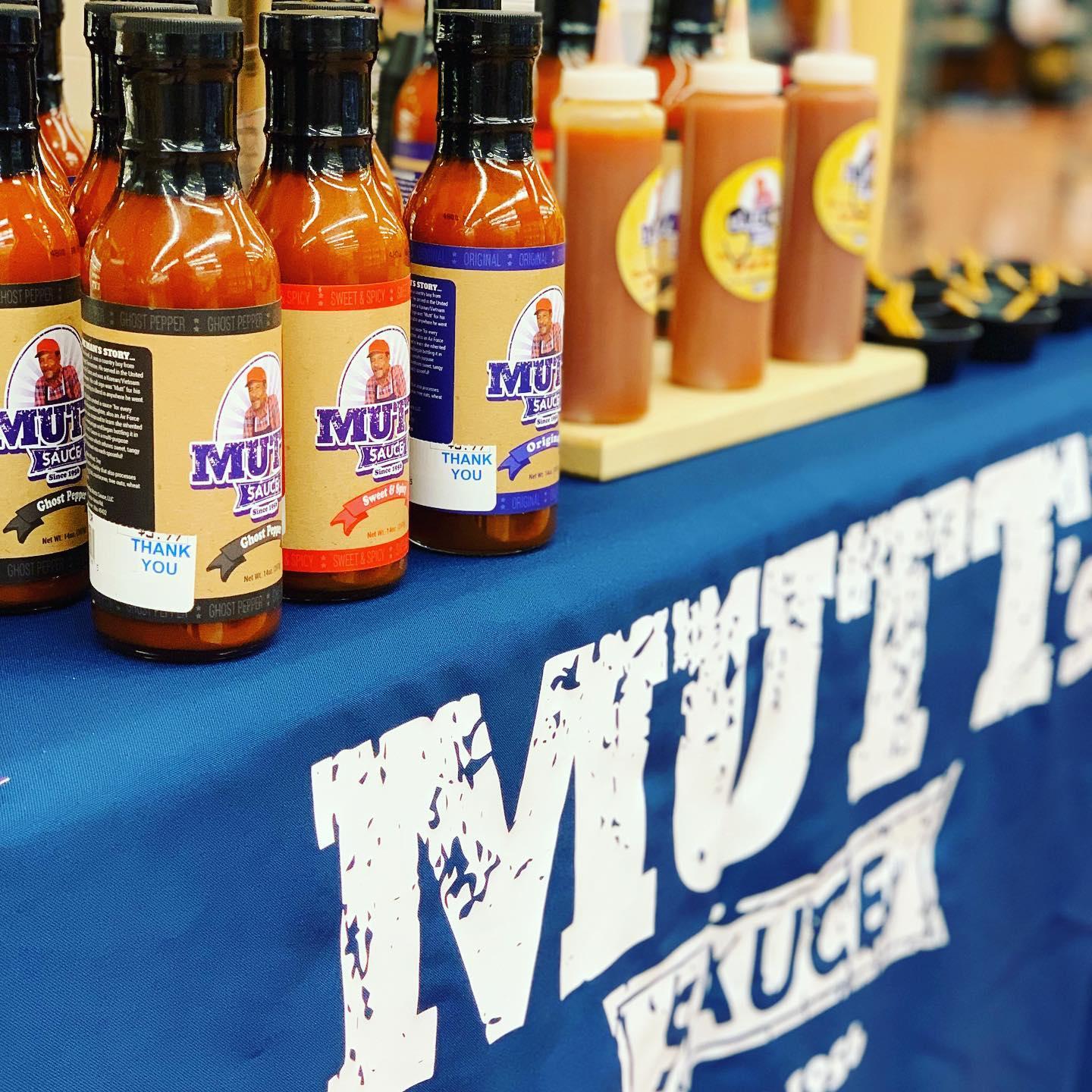
The backstory itself is inspiring. A career military aircraft inspector who served during the Korean and Vietnam wars, Charlie “Mutt” Ferrell, Jr. also had sharp culinary skills, embodied in what was literally a secret sauce that traveled with him across Asia, and eventually stateside. For years, Mutt’s sauce was a highlight of many a party or cookout until Mutt passed away in 2005.
He never thought to commercialize his sauce during his life, but the recipe was a bequest Mutt left to his granddaughter, Charlynda Scales, who like her grandfather served in the U.S. Air Force. After receiving this news in 2013, Major Scales eventually decided to bottle it, label the sauce with his name and face, and a company was born.
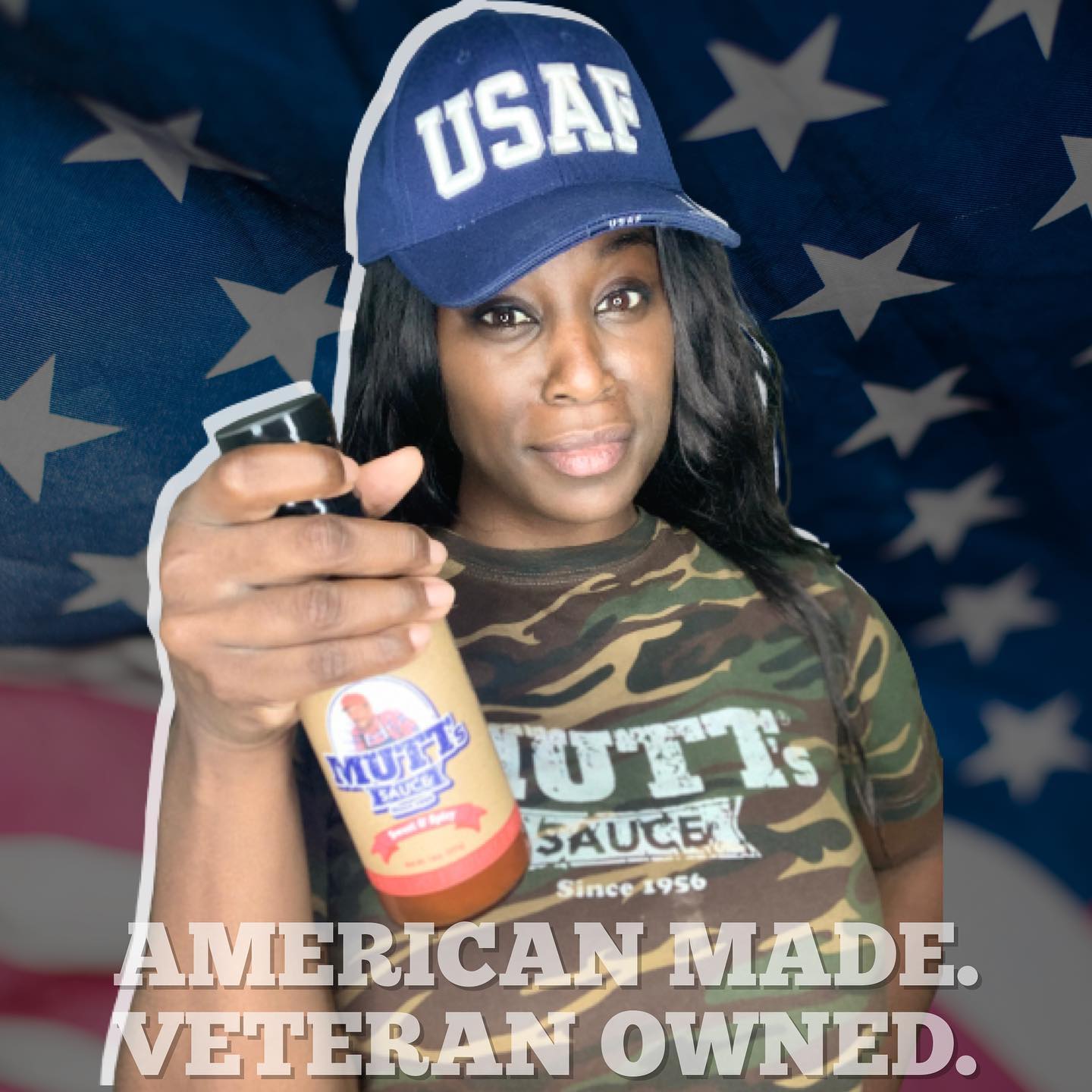
Mutt’s Sauce found success, was humming along, gained press coverage on big-time media outlets… and then the pandemic hit.
“Mutt's Sauce was doing increasingly better every year prior to the pandemic. In fall 2019, we had opened an Amazon store online and were promoted by CNBC as well as Yahoo Finance for the trajectory of our growth,” said Scales, Mutt’s Sauce’s founder and CEO during a recent email exchange with TriplePundit. “We hadn't really embraced e-commerce, and didn't quite know how handle the volume of orders online.”
At one point, Amazon had paused the company’s online store as the online retailing giant’s algorithm concluded that Mutt’s Sauce was not fulfilling orders fast enough. The news was not a huge disruption to the company, as its business model was one largely focused on selling at in-person events and festivals. The summer of 2020 looked promising, as those months were booked for various events.
Enter March 2020.
“I gave birth to my first child, and had exactly six weeks planned of downtime before I'd be traveling [with her baby] - to all the events,” explained Scales. “The announcement of the pandemic happened the day I was bringing him home. My email inbox was full of cancellation notifications: Every event I booked that year was cancelled with no refunds.”
Business advice that Scales had received in previous years then became timely for her company; for example, many mentors who had worked with Scales had long urged her to shift toward more of an e-commerce business for several years. “The Amazon traffic was scary in my eyes,” continued Scales. “It's true that having too much demand is harmful if you're not ready to respond properly.”
From March to May 2020, Scales and Mutt’s Sauce were in business remodeling mode. She revamped and reopened the company’s website, allowing for a more seamless process when receiving online orders. The entire product line was repriced so it could become more profitable. And, the company received some Paycheck Protection Plan (PPP) funds, which the company used to develop packaging that was both easy to assemble and could help prevent breakage during shipping.
The pivot was underway, but Scales did run up against some challenges. “Instituting processes and re-examining all of the costs of goods sold took time, and we were under an invisible ticking clock to sink or swim,” explained Scales. “In the beginning, the resources being offered by the government had not taken the food industry into consideration, so PPP was basically all that was readily available. On top of that, we had to learn how to service our existing contracts - grocery stores - when people only cared to buy the essentials.”
Fortunately for Scales, her status as a veteran opened some doors. “Having an American-made, veteran-owned product did help during the pandemic. The support from the local community and Americans at large has been unwavering and humbling to say the least,” affirmed Scales. In addition to PPP funds, the company also was awarded a grant from the local Chamber of Commerce, enabling this southwestern Ohio-based company to buy new technology that helped with fulfilling online orders.
Also lending advice to Scales was SCORE, a nonprofit that connects volunteer small business mentors across the U.S. SCORE also runs a bevy of programs that partner with women-owned startups and small businesses, runs a small business resilience hub and also offers personalized business advisory services for Black entrepreneurs.
“SCORE has always been there for Mutt's Sauce,” said Scales. “I worked with the SCORE team to create webinars for fellow veteran entrepreneurs and they gave me a platform to talk about my journey, which has led to increased sales as well as great referrals for other business opportunities.”
According to Scales, Mutt’s Sauce is now performing well despite the hardships the pandemic had piled on the company. “Our sales were higher and now we know we can thrive as an e-commerce product. On top of that, we are even more connected to our customers and fellow veterans,” concluded Scales.
For the Fourth of July, Scales, a proud Black female entrepreneur, Air Force veteran, TedX speaker and winner of a wide range of awards, agreed to share a recipe with 3p. More can be found on Mutt’s Sauce’s Facebook page and Instagram feed.

Image credit: Mutt’s Sauce/Facebook
Wendy’s Plant-Based Burger Is Actually Made from Veggies
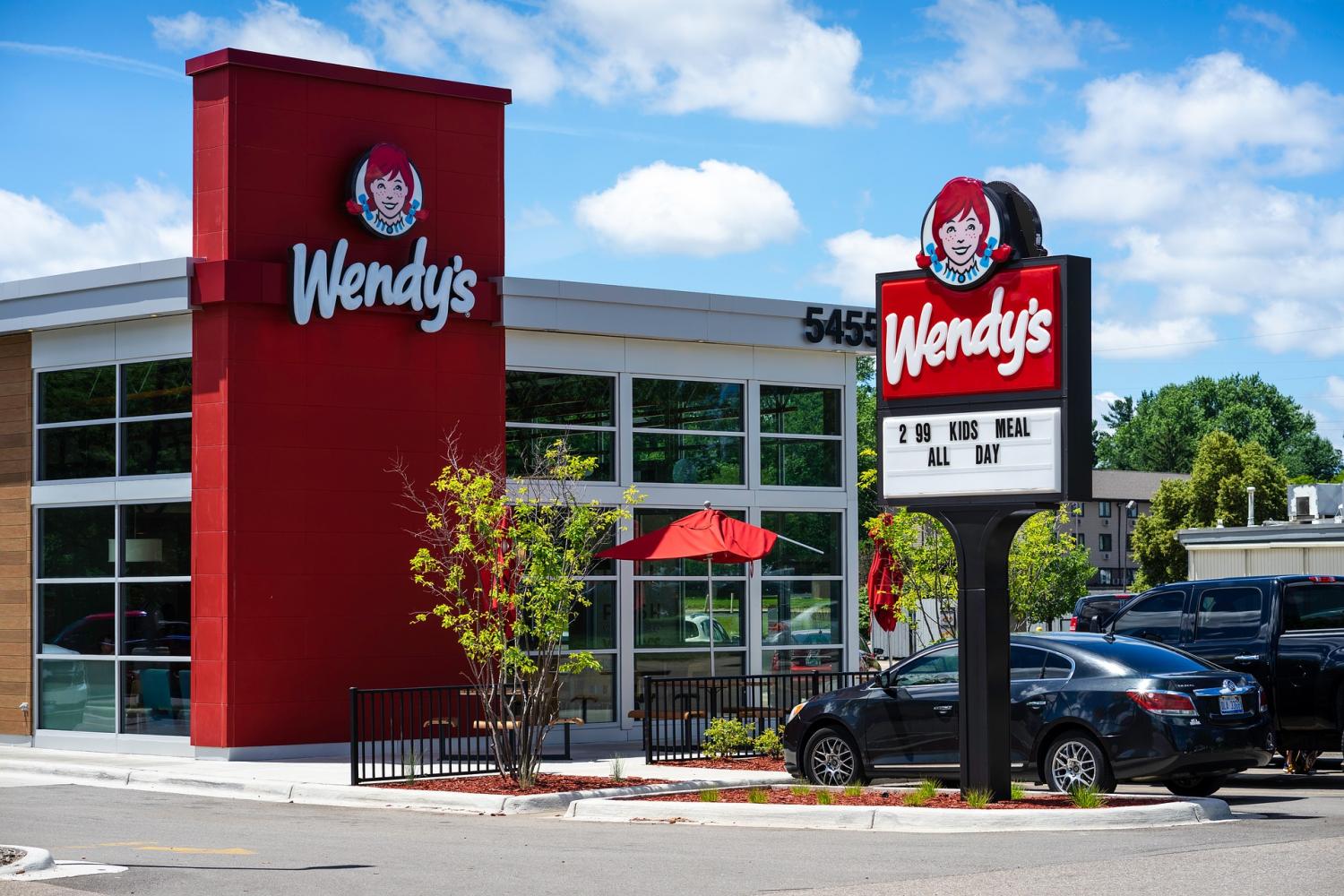

Over the past year, my husband and I have begun implementing more plant-based meat and dairy alternatives into our diets. Treats like Beyond Meat tacos and iced coffee with oat milk have quickly found their way into our family’s fridge, bellies and hearts.
We are far from the only ones. The plant-based food market is estimated to reach more than $74 billion (yes, that’s billion with a B) by 2027, with $17.5 billion coming just from meat substitutes. It’s no wonder gourmet restaurants and fast-food chains alike are looking to expand their meatless menus.
Wendy’s is the latest fast food chain to offer a plant-based sandwich option. Last week, the Dublin, Ohio-based company began testing its new Spicy Black Bean Burger in three U.S. markets: Columbus, Pittsburgh and Jacksonville.
As of press time, Wendy’s had not set an end date for the test run, but John Li, the company’s vice president of culinary innovation, told QSR Magazine that he and his team hope to have a better sense of the black bean burger’s future by “early August.”
Unlike McDonald’s McPlant, Taco Bell’s Naked Chalupa, or Burger King’s Impossible Whopper, Wendy’s black bean burger — which also contains chickpeas, carrots, corn, bell peppers and brown rice — isn’t trying to mimic meat.

Wendy’s new menu item is filling a much-needed gap in fast food’s meat-free offerings: sandwiches made of actual, recognizable vegetables!
After all, as Food & Wine restaurant editor Khushbu Shah wrote earlier this year, “tech meat” (i.e. Beyond Meat and Impossible) has a smaller carbon footprint than actual beef, but it's still five times greater than the carbon footprint of a bean-based burger patty. In addition, she pointed out, “many people are vegetarian or vegan because they don't want to eat anything that resembles meat.”
No one eats a bean burger expecting it to taste just like beef. That’s kind of the point — it is something entirely different, in terms of look, texture and taste.
As Eryn Bennett, Wendy’s manager of culinary production and innovation, said in an interview with QSR Magazine, the company chose black bean as the base ingredient because it’s familiar enough to encourage customers to try it. “It’s not a substitute for meat. This is something that can stand on its own.”
Wendy’s has attempted several plant-based offerings over the years.
In 2015, the chain introduced its first black bean burger to three test markets across the U.S. While this burger did not advance beyond the testing phase, it was used as the basis for the recipe development of the current Spicy Black Bean Burger.
In 2019, Wendy’s introduced — and then quickly removed — a pea protein sandwich called The Plantiful Burger on its Canadian menu. (Pea protein is not to be confused with peameal bacon, a Canadian pork specialty and literally the opposite of plant-based eating.)
And, of course, who could forget Wendy’s “SuperBar” salad bar of the 1980s and 1990s? It was vegetarian — if you don’t count the tacos, the meat-filled pasta sauce, etc.
This actually brings up an important point in fast food’s expansion into different types of protein: “Plant-based” doesn’t necessarily mean “meat free,” nor does it mean vegetarian or vegan. In fast-food kitchens, it can be difficult to have grill space and prep areas specifically designated for vegan items only, especially if there are only one or two menu items that fall into that category. (Just ask Burger King.)
Often, restaurants add mayonnaise and/or cheese to plant-based sandwiches for extra flavor. Wendy’s Spicy Black Bean Burger, for example, comes with pepper jack cheese on it. Bennett pointed out several times in the QSR Magazine interview that the new bean burger is meant for “flexitarian," and not “vegetarian” diets.
And here, dear TriplePundit readers, is where other writers would make a “Where’s the beef?” joke. I respect you too much to do that, however. You are welcome.
Image credits: Wendy’s corporate site; Michael Form/Pixabay
When More Isn't Enough: What's Driving the Global Climate Positive Push


It’s not exactly news that “climate positive” is overtaking “carbon neutral” as the responsible business community’s next destination in contributing to the Paris Agreement’s goal to limit global warming to 1.5 degrees Celsius.
Even before the pandemic, commenting on the agency’s 2019 emissions gap report in a recent press statement, Inger Anderson, the UN Environment Program’s (UNEP) Executive Director, said, “Our collective failure to act early and hard on climate change means we now must deliver deep cuts to emissions – over 7 per cent each year, if we break it down evenly over the next decade. This shows that countries simply cannot wait until the end of 2020, when new climate commitments are due, to step up action. They – and every city, region, business and individual – need to act now.”
Acting now doesn’t necessarily mean getting paid later
Given the sluggish pace of progress, neutralizing carbon’s impact on the planet clearly won’t cut it anymore. Governmental and corporate entities are catching on to the risks of not doing enough and the immediate benefits of taking decisive and radical action to transform carbon intensive status quo operations.
To that end, more companies are coming out with climate positive commitments that work up to carbon neutrality and persist beyond that threshold. The evidence suggests that in turn, they are finding public support in pursuing this goal.
Consumer behavior has shifted globally. A survey from the Paris-based market research company Ipsos, published in late 2019, found that over two-thirds of adults surveyed across 28 countries claimed their concern over climate change has caused changes to their consumer behavior.
In drafting guidance companies seeking to embark on a climate positive strategy, the World Wildlife Fund (WWF) observed one of many benefits to aligning with consumer demand: “Those companies who act on this climate positive agenda are likely to achieve a social and environmental ‘license to operate’ by society in the coming decades.”
That begs the question: how is it possible to adapt and evolve into a climate positive corporation? The WWF’s three recommendations for climate positivity move beyond science-based targets for scope 1, 2 and 3 emissions — with reductions that don’t lean on long-term carbon offsets. Companies aiming to go the extra mile must also advocate for progress and encourage appropriate shifts in consumer behavior.
Achieving climate positive goals worldwide and across industries
Early last year, before the pandemic came to headlines, the Outdoor Industry Association (OIA) set a climate positive goal for its entire industry: to become climate positive by 2030. The organization is aiming to become a global leader with the goal to be the first climate positive industry. Currently, more than 100 companies have signed onto the OIA’s Climate Action Corps, including brands such as REI, Patagonia and Klean Kanteen.
Just like any other industry, outdoor companies have their own unique incentives to combat climate change. How would outdoor companies fare without healthy ecosystems and communities? In a press statement, Amy Horton, OIA’s senior director of sustainable business innovation, said,
“There’s no denying that climate change is an existential crisis for the outdoor industry. The question is no longer ‘what will we do about it?’ – it’s how far can we go, and who wants to join us? We want the outdoor industry to lead the charge and inspire other industries. Our efforts alone will certainly not solve the climate crisis – we need every business, government, and individual to act. With this new strategy, we’ve established a credible, practical pathway, supporting resources, and interim milestones that will guide and accelerate progress for companies no matter how far along they are on the path.”
The Climate Action Corps’ year-one baseline shows promise, with almost half of the corps’ members taking action on scope 1 and 2 emissions from operations, and almost one-third taking action on scope 3 — the latter often the largest contributor to a company’s footprint, encompassing activities in the greater value chain. But the industry values honesty. The OIA noted during a virtual celebration of the Climate Action Corps’ inaugural year that for some members, certain product footprints have increased this year — and considering the long path to reach such goals, in the end that’s ok.
Persistence is the key to achieving such high goals becoming a climate positive company, White House National Climate Advisor Gina McCarthy emphasized as she spoke to the industry during the year-one gathering. “Don’t throw anything away because it’s not perfect,” she said. “Demand perfection, but keep moving forward.”
Such is sage advice for industries leading the way or just starting out in the journey to ensuring that in the future, we can live in a safer climate.
Image credit: andreas160578/Pixabay
Bank Policy Institute Attacks Racism, But Not Voter Suppression

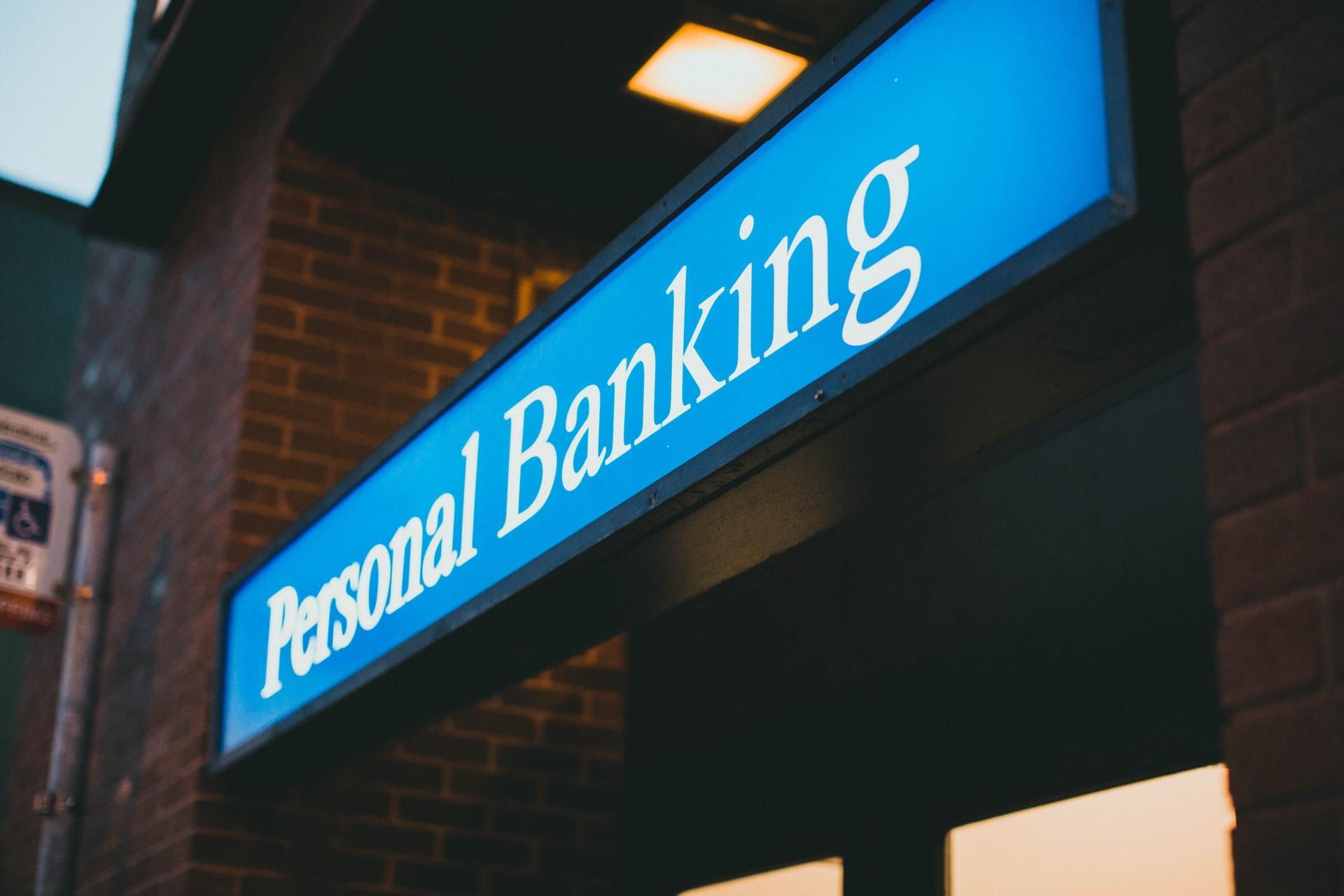
Just in time for a congressional hearing on diversity and inclusion in the financial sector, the Bank Policy Institute recently released a set of 30 recommendations for banks to help undo some of the economic damage done by generations of institutional racism. However, unless the Bank Policy Institute can convince financial corporations to stop supporting lawmakers leading voter suppression efforts, those 30 circles of activity will continue to be trapped in a walled-off square, and the promise of equal rights will remain a hollow one.
The Bank Policy Institute tackles institutional racism
The Bank Policy Institute’s 30 Best Bank Practices report is intended to promote a significant increase in economic opportunities and fairness in matters of finance. Compiled in the wake of George Floyd’s murder last year, it focuses specifically on the improvement of outcomes in Black communities, but it can apply to other communities of color as well.
BPI released the report in time to catch the news cycle with its testimony before the House Subcommittee on Diversity and Inclusion earlier this week. In that context, the report’s authors do not sugarcoat the current state of diversity and inclusion.
“Nearly one in five Black adults making over $100,000 a year reports being denied credit, more than twice the rate of White adults. And the rate of Black adults who are unbanked is more than double the rate of adults overall,” BPI explains.
“In slavery’s aftermath, the mainstream banking system remained largely closed to Black Americans, and so large-scale benefits of financial inclusion were denied to the community as a whole,” BPI states, adding that “This disparity persists to the modern day, driven by the shortcomings of past policy, neglect and intentional exclusion.”
Voter suppression trumps best practices
The congressional hearing was titled, “The Legacy of George Floyd,” and its purpose was to “examine the extent to which banks, publicly traded companies, and others in the financial services industry have made good on their promises to Black communities and businesses, as well as steps those institutions have taken towards achieving sustainable racial equity within their organizations.”
Given that focus, it is understandable that none of the 30 recommendations outlined by BPI deal directly with voter suppression. Nevertheless, suppression of the Black vote and exclusion from the democratic process is a thread — and all too often, a murderous one — that has run concurrently with economic suppression and exclusion all throughout American history.
As with economic suppression, voter suppression has persisted to the modern day. The organized mob that attacked Congress on January 6 was ginned up by a years-long litany of false claims of voter fraud by former President Trump, focusing mainly on communities of color. Trump intensified his attacks on election integrity in the months leading up to Election Day, and when Black voters played a decisive role in Biden’s Electoral College victory, it only reinforced the false belief that the election was “stolen.”
Trump has never let up on his false accusations of a stolen election after January 6, and his supporters never stopped trying to silence the Black vote, too. When the bloodthirsty mob failed in its intention to murder former Vice President Pence and overturn the election results on January 6, state legislators took up the voter suppression cause.
The shift into statehouses has forced corporations to play whack-a-mole with their political giving.
In the aftermath of the violence on January 6, a unified corporate response was slow to develop, but a significant number of high-profile business leaders did pledge to stop giving to the 147 members of Congress who voted against certifying President-Elect Biden’s electoral victory. Many followed through on that promise, and their withdrawal of corporate funding could have a significant impact on extremist Republican representatives who depend heavily on support from PACs.
However, now that the voting rights battle has shifted to statehouses, some of those same corporations are being forced to examine their donations to state lawmakers, too.
That puts BPI member banks in an awkward position, even among those who responded aggressively to the January 6 insurrection.
BPI member PNC Financial Services Group (known mostly for its banking subsidiary, PNC Bank), for example, was among those setting a high bar. The company, in addition, has long compiled a credible record on the diversity and inclusion front.
“In the aftermath of the 2021 riot at the U.S. Capitol, PNC has indefinitely suspended contributions to all members of Congress who voted against the certification of Electoral College votes for the 2020 Presidential election,” PNC states on its website.
On June 12, PNC also announced a $1 billion economic empowerment initiative focusing on Black communities and other underserved populations.
However, last month PNC also finalized its acquisition of the financial services firm BBVA USA Bancshares Inc. and its U.S. banking subsidiary. That puts PNC front and center in the war on voting rights.
BBVA operates mainly in seven states, and four of those - Alabama, Arizona, Florida, and Texas - have become notorious epicenters of state-based voter suppression activity in various forms, including a fake ballot “audit” in Arizona ordered by Republican lawmakers that threatens to undermine election results across the country.
Best bank practices and voting rights
PNC and other BPI members can help fight back by reading between the lines of 30 Best Practices.
Several leading banks ramped up their voter turnout efforts in 2020, and 30 Best Practices notes that banks have ample opportunity to flex their muscles outside of their own operations, while adhering to state and federal regulations.
“Externally, banks are looking at ways to immediately expand their philanthropic activities and boost their partnerships with other entities in ways that will benefit impacted communities and maximize the desired effects,” BPI notes, while advocating for management to take direction from diverse employees.
“BPI banks know that their philanthropy, partnerships and procurement actions should be driven by consultation with a diverse internal set of stakeholders with an eye towards constantly assessing the positive impact on the communities they serve,” BPI explains.
BPI also emphasizes that diversity hiring can and should have an impact on the philanthropic and community activities of banks.
“Empower bank personnel to assist in selection of philanthropic giving and spur personal involvement by matching your team members’ generosity, tying efforts to workplace giving initiatives,” BPI advises. “Banks are listening to their employees’ recommendations about new potential recipients of grant funding, with new types of organizations and new leaders emerging as potent partners for change.”
If banks are really serious about being potent partners for change, they can find a way to help boot anti-democratic lawmakers out of state and federal office and provide more support for those who advocate for voting rights instead of those abetting voter suppression.
Image credit: Jonathan Cooper/Unsplash
New Search Engine a Symptom of the Rising Backlash Against Big Tech


More than 20 years ago, the rise of online advertising platforms like DoubleClick and 24/7 Media promised to make much of the Internet and its content absolutely free. That promise sputtered during the early 2000s, but eventually big tech titans like Google (which eventually acquired DoubleClick) and Facebook not only ironed out some of the problems with online advertising, but also became wildly successful and profitable.
But the huge success of online ads, in the views of more consumers, has come with its own downside. Many would even say advertising has gone from innovative to creepy, as that eye cream or vacation you were thinking about keep following you from search engine results to social media platforms to that news story you’re reading. And for those who simply are researching information for work, study or play, those search results appear to get more and more cluttered.
To that end, one search engine company says it has an answer: a paid subscription model that promises a better user experience, one free of those oft-annoying ads, because this company is answering to its customers — not the advertisers who keep flocking to big tech.
Neeva has announced this week that its search engine service is available to U.S. customers. For now, those interested can visit the site, score a free trial for three months, and pay $4.95 a month thereafter. The company promises complete data privacy by blocking any third-party trackers. Users can also connect Neeva to calendars, email accounts and cloud storage platforms.
For those consumers for whom online shopping will always be their thing, Neeva allows them to choose retailers and vendors from which they wish to see results. Customization options are also available for news content and any financial information consumers wish to research.
Plus, for those for whom data privacy is of the utmost priority, Neeva allows for incognito searches as well. That’s a response to the concerns many people have about how their data is being shared online versus how companies are listening to them: A recent S&P Global survey, for example, found that while almost half of consumers worry about sharing their personal information online, only 8 percent of companies have dedicated teams that focus on such challenges as data protection and data privacy.
“Neeva was built on the premise that search should focus on the consumer, and only the consumer, not advertisers,” said Sridhar Ramaswamy, the CEO and co-founder of Neeva, said in a public statement. “Search results should always prioritize finding the best answer to a consumer’s query — not on selling ads or tracking behavior online. Today’s launch of our subscription-based model is the first step in providing a viable search alternative for consumers, built on trust and transparency.”
Neeva is not the first search that promises a search experience free from those data privacy, advertising and tracking concerns. DuckDuckGo has its share of fans seeking to avoid anything big tech since it launched in 2008; last month, Brave announced a similar search engine without user tracking and other data privacy worries; for now, that service is in beta testing.
But Neeva stands out for trying out a subscription-based model, and it also benefits from the knowledge it has from hiring a staff largely comprised of former Google and YouTube employees. For five bucks a month, there’s a good shot many consumers will feel the service and privacy are both worth that spend.
Image credit: Pierre Bamin/Unsplash
It Doesn’t Have to Be So Complicated: How to Engage Consumers in Sustainability


In a March survey, nearly two-thirds of Americans said they’re willing to pay more for sustainable products, but most (74 percent) don’t know how to identify them. So, how can brands communicate with consumers about sustainability and help them understand how their purchases and behaviors impact the planet?
There's no getting around it: This space is complex, and creating products that truly carry less impact on the environment requires a host of considerations. But communicating with consumers doesn’t have to be complicated, and rising public awareness of sustainability is an open invitation for brands to turn consumer passion into engagement, loyalty and trust.
“In general, we're seeing tremendous growth in the interest in sustainability features and benefits of products,” said Ellen Jackowski, chief sustainability and social impact officer at HP. “The average person is starting to feel the impacts of climate change. They're starting to understand the impact humans are having on the planet at a level that hasn't been recognized in the past.”
“We know sustainability is important to our customer, and we want to lead, not follow, consumer demand,” added Savannah Sachs, CEO of skincare and wellness brand Tula.
We spoke with these two executives about how to communicate around a specific segment of the sustainability space — responsible forestry — to get a sense of how to break down complicated topics in an accessible way.
Communicating with consumers about responsible forestry
Responsible forestry has received well deserved attention in recent years as an essential component of a low-carbon future. But it’s a deceptively complicated topic that can easily confuse consumer audiences. The Forest Stewardship Council (FSC), which brings together environmental, social and economic interests to promote responsible forest management, applies 10 principles and 57 distinct criteria for verifying that forests around the world are well managed. There’s a lot to unpack with that.
Still, even if the nuances that make for a well managed and sustainable forest aren’t familiar to the average person, the basics around why forests are important for a healthy planet are easier to understand. “Forests clean the air we breathe and the water we drink, [and they] provide habitat for 80 percent of terrestrial biodiversity. 1.6 billion people depend on forests for their livelihoods,” Chris McLaren, chief marketing officer for FSC U.S., told us earlier in this series.
Once this basic understanding is reached, it’s a pretty short leap to educate consumers around how their daily habits can impact forests and how to make more responsible choices. “Whether consumers are familiar with the Forest Stewardship Council or not, the truth is we still all have a responsibility to our planet, and communicating our mutual goal of preserving the world’s forests is ultimately what’s most important,” said Sachs of Tula.
A consumer marketplace for certified sustainable products opens the door for dialogue
In April, FSC launched an online portal to make it easier for U.S. consumers to buy products sourced from responsibly managed forests. On the new portal, OneSimpleAction.org, consumers can shop hundreds of products from popular brands and retailers, including HP, Tula, Seventh Generation and Charmin.
The site also provides information about how consumer purchases of FSC-certified products can protect forests, using simple but evocative language — “One Simple Action can protect forests for all, forever” — to address consumers directly and make the call-to-action compelling and clear. "The new OneSimpleAction.org creates a powerful and convenient way for consumers — and the companies supplying the products they use — to make a big difference," McLaren of FSC, said in a press statement.
HP, a longstanding FSC partner, is a founding sponsor of the platform along with Procter & Gamble. “FSC plays a really important role in helping to communicate with customers,” Jackowski said. “Increasing the awareness of what FSC is and all of the momentum they've gotten behind that certification helps us simplify how to communicate to consumers as well.”
Action items for sustainability communication that works
Embrace simplicity. “Simplify your messages,” Jackowski advised. “This space is really complex, so try to figure out the simplest message. By partnering with someone like FSC, you can also leverage the power of their logo and existing brand to continue that drive for awareness around sustainable forestry and management.”
Ensure transparency. “There's this concept of 'plant a tree,' but we all know planting a tree isn't enough,” Jackowski said. “It really is about forest restoration, protection and responsible management, so be clear about exactly what your efforts are supporting and how you’re following the guidelines the science is directing us toward.”
Invite customers along. “Sharing news and updates on our sustainability initiative and partnerships across multiple platforms allows us to impactfully communicate our sustainability message to our customers,” Sachs told us. “This also gives them the opportunity to learn how they can participate with us on the path to a more sustainable and green planet. Through our partnerships with organizations like TerraCycle and Cloverly, we are thrilled to offer different ways for our community to join us as we all do our part in protecting the planet.”
This article series is sponsored by Procter & Gamble and produced by the TriplePundit editorial team.
Image credit: Unsplash/Michal Czyz
Corporate PAC Donations Can Talk When Democracy Is on The Line
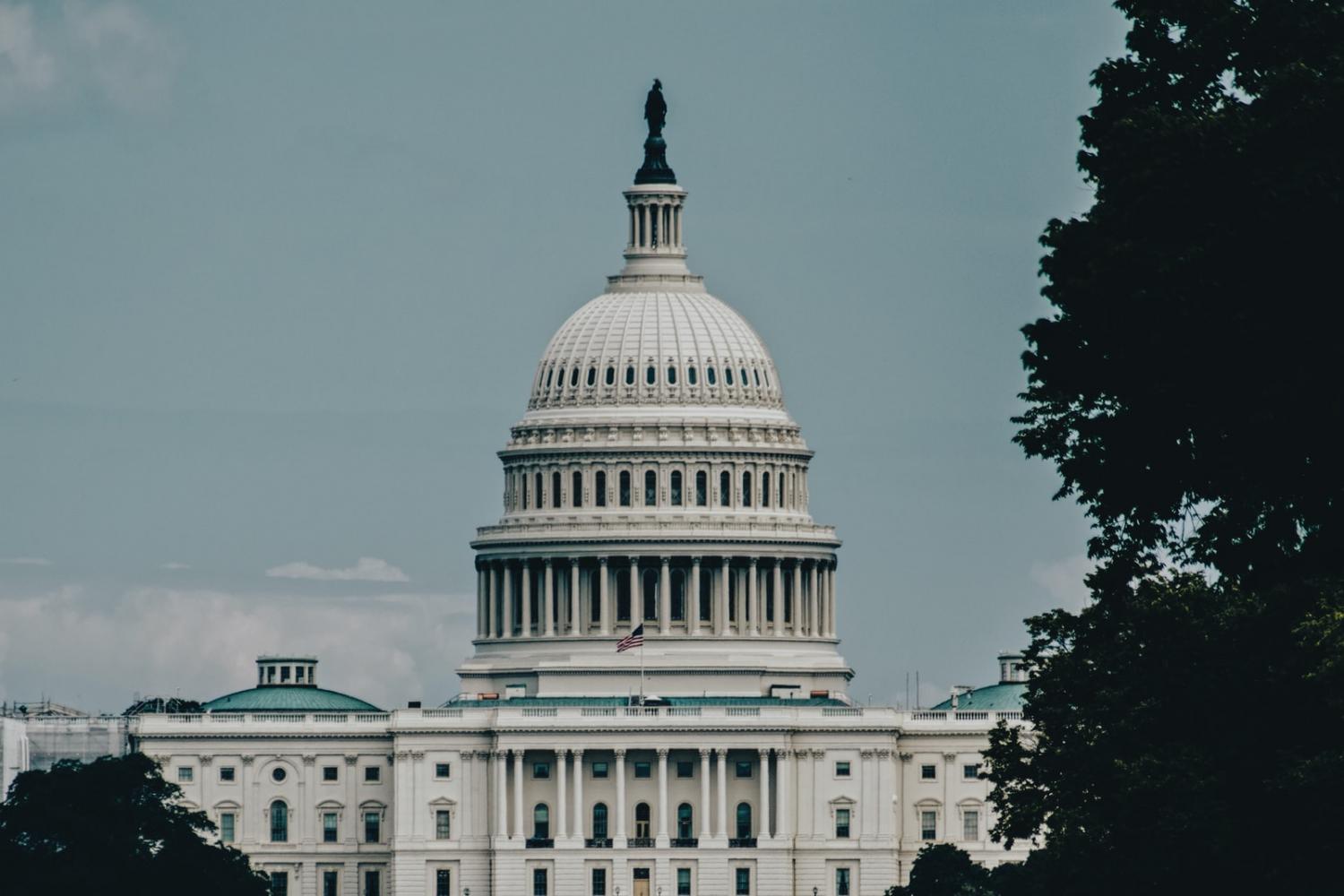

The failed insurrection of January 6 was aided and supported by 147 sitting members of Congress who pledged to vote against certifying the results of the 2020 Presidential election. As long as they continue to hold those seats, the American democratic system is at risk — to put it mildly. The question now is whether or not business leaders can deploy their political action committee (PAC) donations to help push anti-democratic lawmakers out of office when the all-important midterm elections come up in 2022.
And the answer for the influence of PAC donations is…yes
At first glance, it may seem that corporate funding makes little or no difference in the age of social media, at least not for elected officials who are willing to follow the Trump strategy of appealing to racists, xenophobes and white supremacists.
Georgia Representative Marjorie Taylor Greene, for example, has been offsetting the loss of corporate dollars with a steady stream of offensive antics that appeal to her Trump-favoring constituents and a significant number of out-of-state supporters, too.
In addition, PAC donations only account for about 15 percent of all donations for members of the U.S. Senate and House of Representatives overall. However, that average figure hides a significant number of members of Congress who lean more heavily than others on PAC donations — or they did, before business leaders pulled the rug out from under them for supporting an insurrection.
PAC cancellation can hit where it hurts
Independent journalist Judd Legum has been tracking PAC donations to the 147 Republican members of Congress who voted to support the insurrection. He has noted that a significant number of business leaders followed through on their pledges to withdraw corporate funding from elected officials who supported the violent, bloody events of January 6.
A new analysis by the business organization Leadership Now Project adds more detail that suggests how deep the PAC cut goes for some of those lawmakers.
“Over half of the lawmakers who objected to the election results received more than 25 percent of their funding from business PACs, and of those, 25 received more than 50 percent from business PACs,” Leadership Now explained, adding that “The data reveals there are concentrations of lawmakers who receive high levels of business PAC funding in hotly contested states, particularly in Texas, Florida, and Pennsylvania.”
Editor's note: Be sure to subscribe to our Brands Taking Stands newsletter, which comes out every Wednesday.
The detailed analysis names each of the lawmakers and provides the percentage of their funding from PAC donations.
“Companies can demonstrate that they genuinely support the legitimacy of the 2020 election results by staying accountable to their commitments to pull back funding,” Leadership Now observes. “At a moment when 26 percent of Americans and 55 percent of Republicans still doubt the legitimacy of the election, and members of Congress who refused to accept the results are consolidating their position, business commitments to pull back from these lawmakers make a meaningful difference in protecting our democracy.”
Some businesses still support the sedition caucus through PAC donations
So far, Republican members of Congress have blocked investigations that could reveal more information about the actions of the 147 insurrection-supporting lawmakers leading up to and including the events of January 6, However, House Speaker Nancy Pelosi is moving forward with the formation of a Select Committee, which cannot be blocked by Republicans. Its findings could be very damaging to insurrection-supporting legislators, and deeply embarrassing to any company that still donates to PACs associated with them.
For an indication of just how much heat could pour down upon business leaders who are willing to let insurrection slide, consider the case of Toyota.
Last week the watchdog organization CREW ran the numbers and found that 109 of the 147 legislators continued to receive corporate or industry PAC money after January 6.
Koch Industries and Walmart are among the top at the list for contributions to the NRCC and NRSC at $105,000 and $60,000, respectively. But the real attention-getter was Toyota, which turned heads with 37 contributions to individual members and leadership PACs totaling $55,000.
To put that in context, $55,000 is just about twice the $17,500 that Koch poured into members and leadership PACs. Walmart spent nothing in that category as did many of the others in the CREW analysis. The next closest company was Cigna with $12,500.
“While every member has a campaign committee, not all members have a leadership PAC, which is a type of political committee established by a candidate or a federal officeholder to raise money that’s supposed to be used to support allies,” CREW explained. “In practice, however, leadership PACs are often little more than slush funds for politicians to pay for luxury resort stays, golf club memberships, and private jet travel, thanks to the FEC’s loose interpretation of the statutes that govern them.”
Lessons for the tone-deaf
CREW matched the PAC donations with the 147 insurrection-supporting lawmakers. According to its analysis, Toyota made the list of top 10 corporate donors to the “sedition caucus,” coming in at seventh.
That would not have necessarily turned heads, except that Toyota was the only automaker in the top 10. It was also the only consumer product manufacturer in the top 10, and it was the only widely recognizable name except for Walmart.
The others were (counting down from the top): Koch, American Crystal Sugar, Fresenius Medical Care Holdings, Inc., Walmart, Nextera Energy, Inc. PNC, CSX Corporation, U.S. Bancorp and Cigna.
The CREW analysis quickly turned into a media firestorm focusing on Toyota.
USA Today, for example, reported the CREW analysis under the headline, “Toyota tops list of corporate donors to anti-election-certification Republicans in Congress after Capitol insurrection.”
Toyota attempted to put out the fire with a public statement, but that only made matters worse.
"Toyota supports candidates based on their position on issues that are important to the auto industry and the company," the automaker said in a statement reported by USA Today and others. "We do not believe it is appropriate to judge members of Congress solely based on their votes on the electoral certification.”
The problem for Toyota is that voting to certify the General Election is a bipartisan formality that has taken place virtually without a hitch for generations. The January 6 vote was nothing like that. It took place just hours after a bloodthirsty mob broke into the Capitol Building with the intent to kill, in order to interrupt the peaceful transfer of power and install former President Trump into an illegitimate, unwanted and undeserved second term.
The lawmakers who voted against certifying the results were not voting for their favorite ice cream. They voted to endorse an anti-democratic, anti-American, violent and tyrannical power grab that could have wreaked chaos across the country and caused as much damage, if not more, than the Civil War.
Fortunately, the insurrection was quelled, and further violence has not erupted across the country, at least not yet.
However, those votes continue to have a consequential impact on the democratic process. Republican state legislators are attempting to pass hundreds of new laws that make it harder for Democratic-leaning constituents to vote, and they are leveraging the same false “voter fraud” canard that the insurrection supporters used to justify their votes against the 2020 election.
Given this context, Toyota clearly failed to recognize the significance of continuing to put PAC donations in the pockets of insurrection-supporting members of Congress.
“This is essentially a financial analog to the assertions by some GOP leaders that nothing really serious occurred at the Capitol on Jan. 6, and the Republicans’ refusal to support a bipartisan investigation of the events,” wrote LA Times business columnist and Pulitzer Prize winner Michael Hiltzik, under the scorching headline, “By supporting seditionist lawmakers, Toyota shows disdain for the public interest.”
What’s next for corporate America?
The media firestorm was bad enough, but for Toyota the consumer backlash could be even worse, as Toyota owners have taken to social media vowing to never buy another car from the company.
The threat of a consumer boycott could evaporate, as they often do. However, Toyota’s public relations crisis comes at a pivotal moment for the auto industry, when U.S. automakers like Ford are introducing all-electric versions of their most iconic brands.
That could put Toyota’s hybrid Prius brand at a disadvantage. Ford has already found that its all-electric version of the Mustang is drawing in a significant number of new customers. Toyota could find itself on the short end of the stick as car buyers explore new choices.
In addition, business-to-business boycotts can be highly effective. Toyota may begin to feel pressure from high profile corporate stakeholders such as NASCAR, which has been voicing support for the Black Lives Matter movement while trying to stay out of the voter suppression debate.
All in all, the entire controversy has lent steam to House Speaker Pelosi’s plans for investigating the failed insurrection of January 6, and holding to account those who were responsible.
Business leaders who don’t want to get caught in the crossfire should get out while they still can and stop sending money to both federal and state lawmakers who support insurrection, voter suppression, or both.
Image credit: Jose Fontano/Unsplash